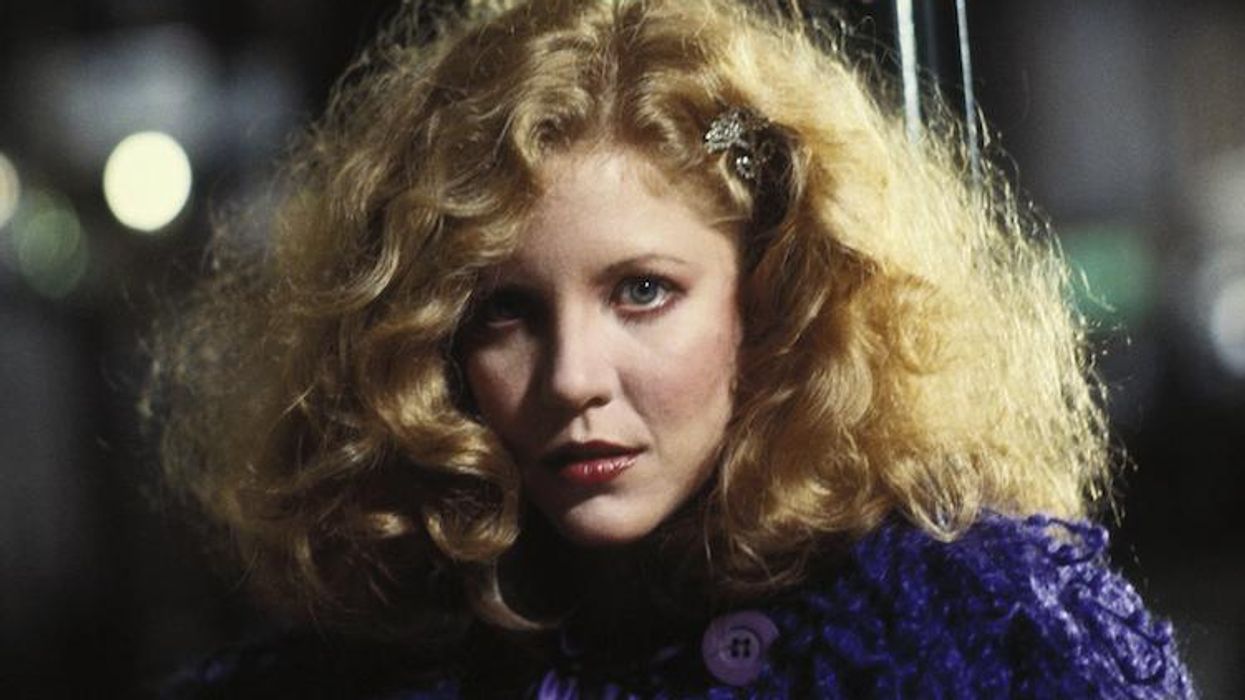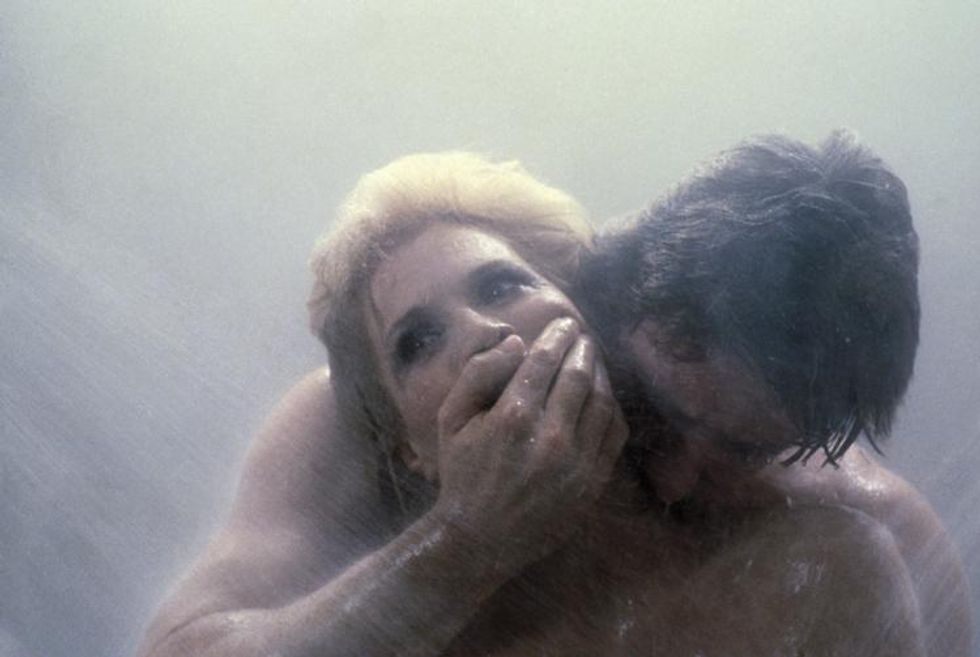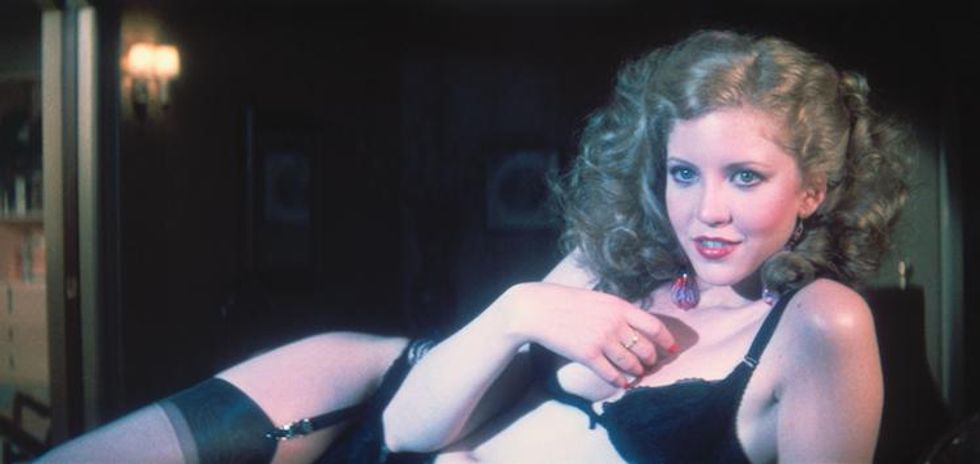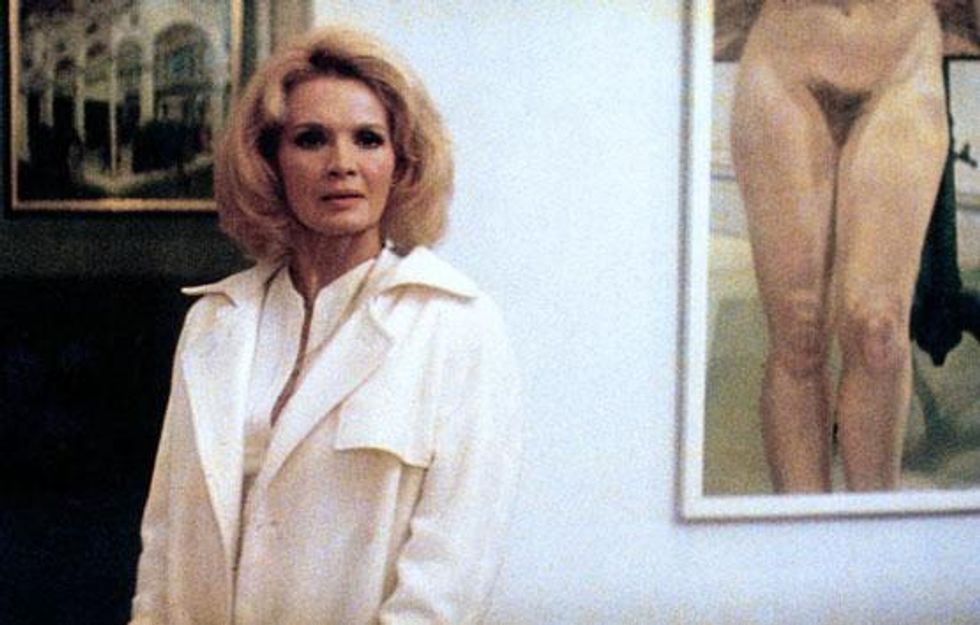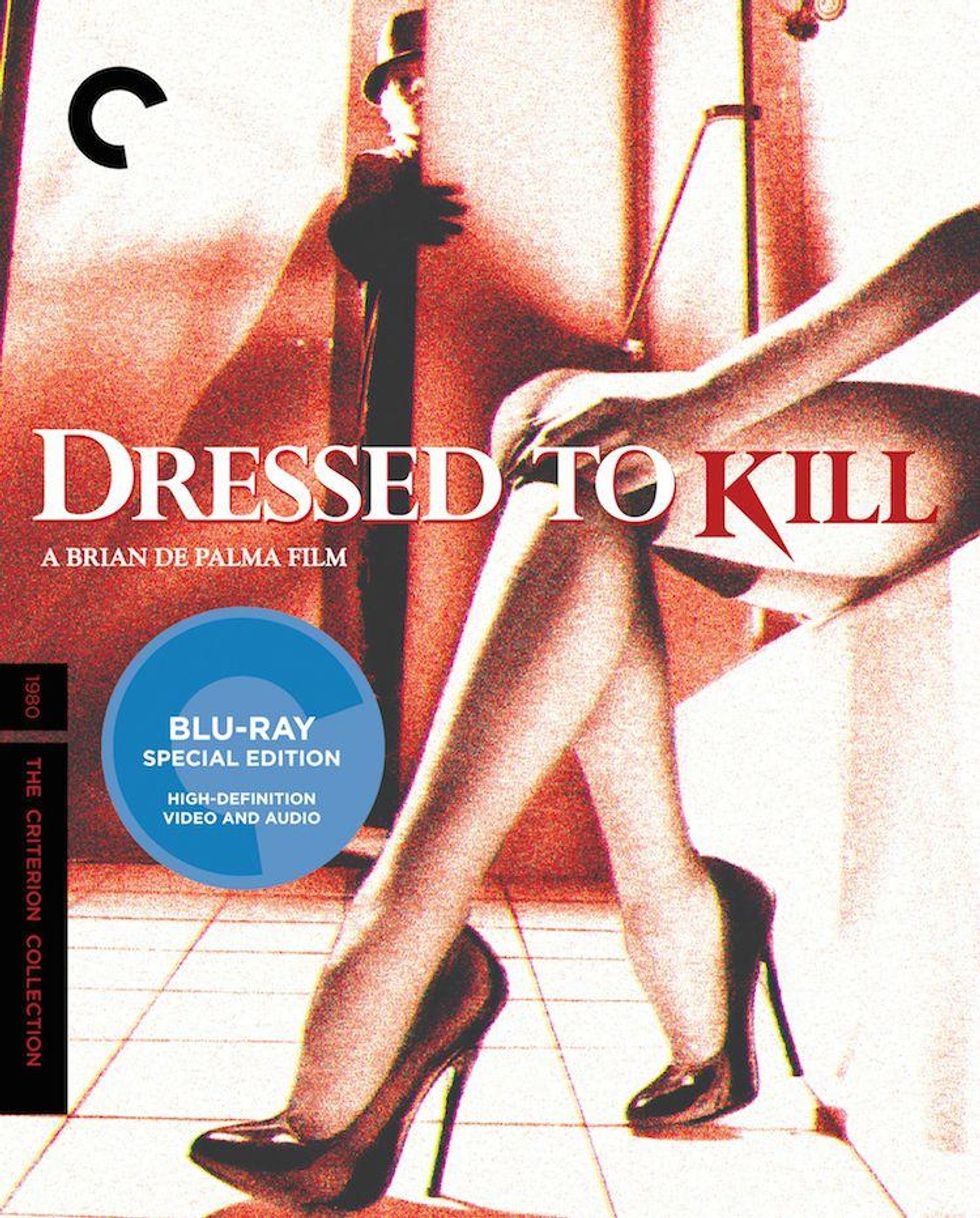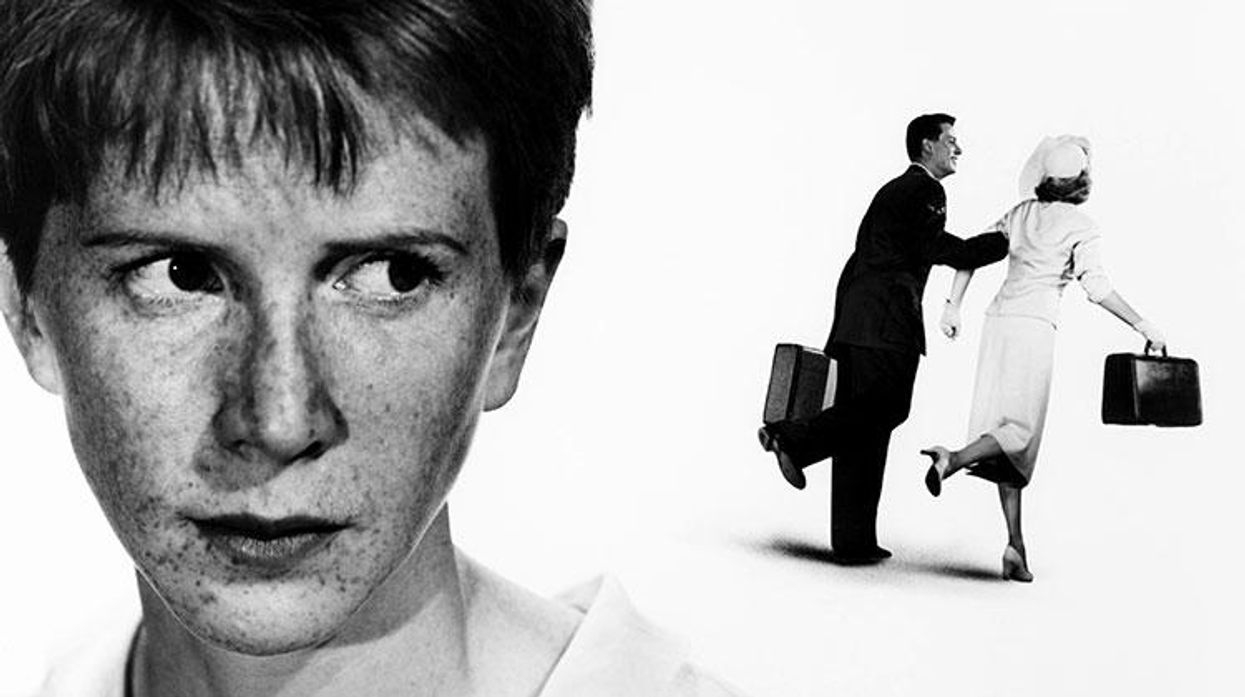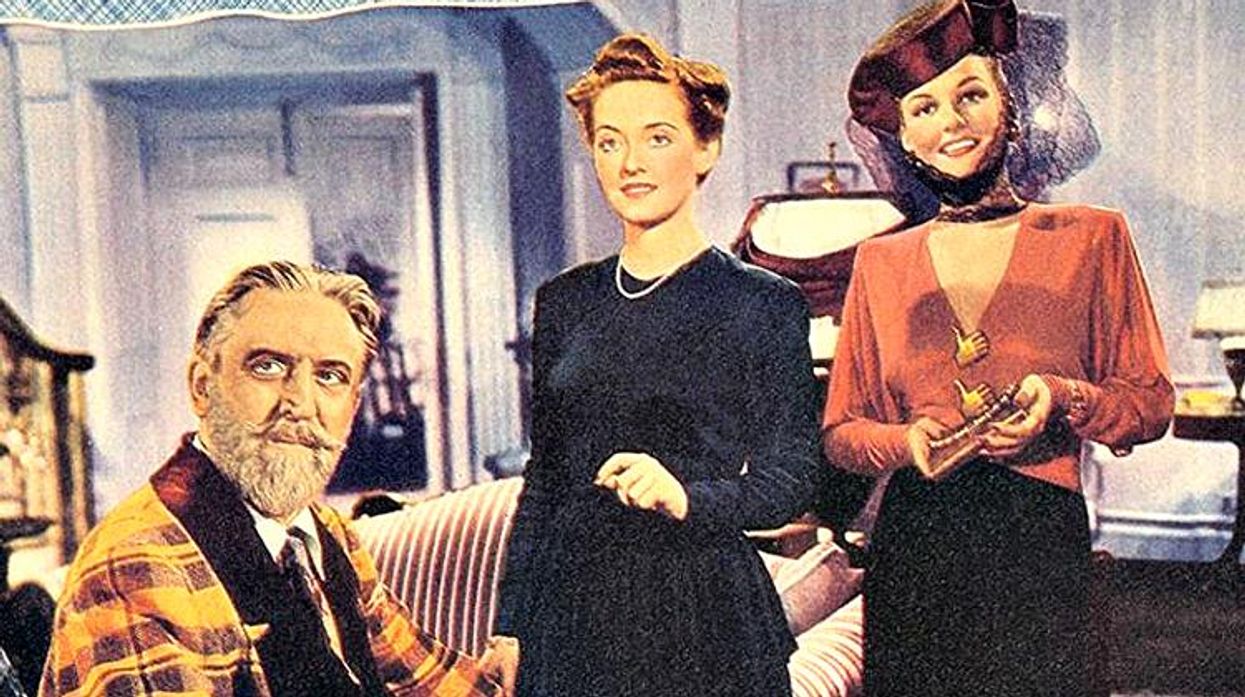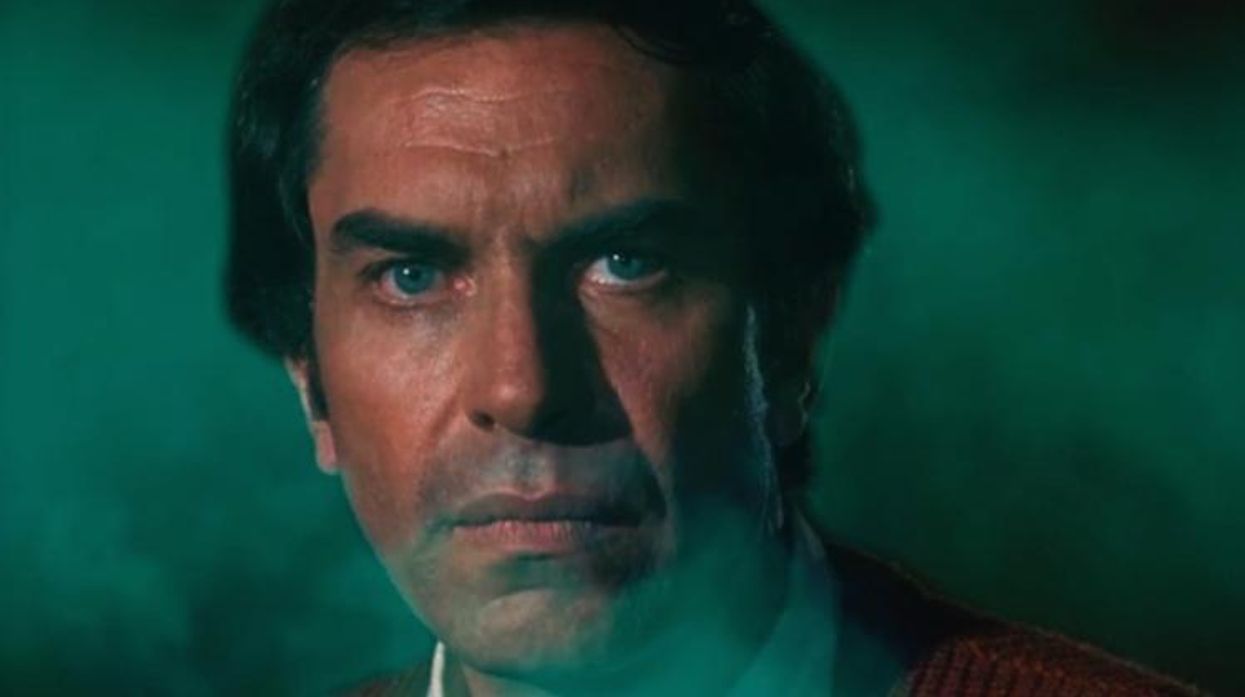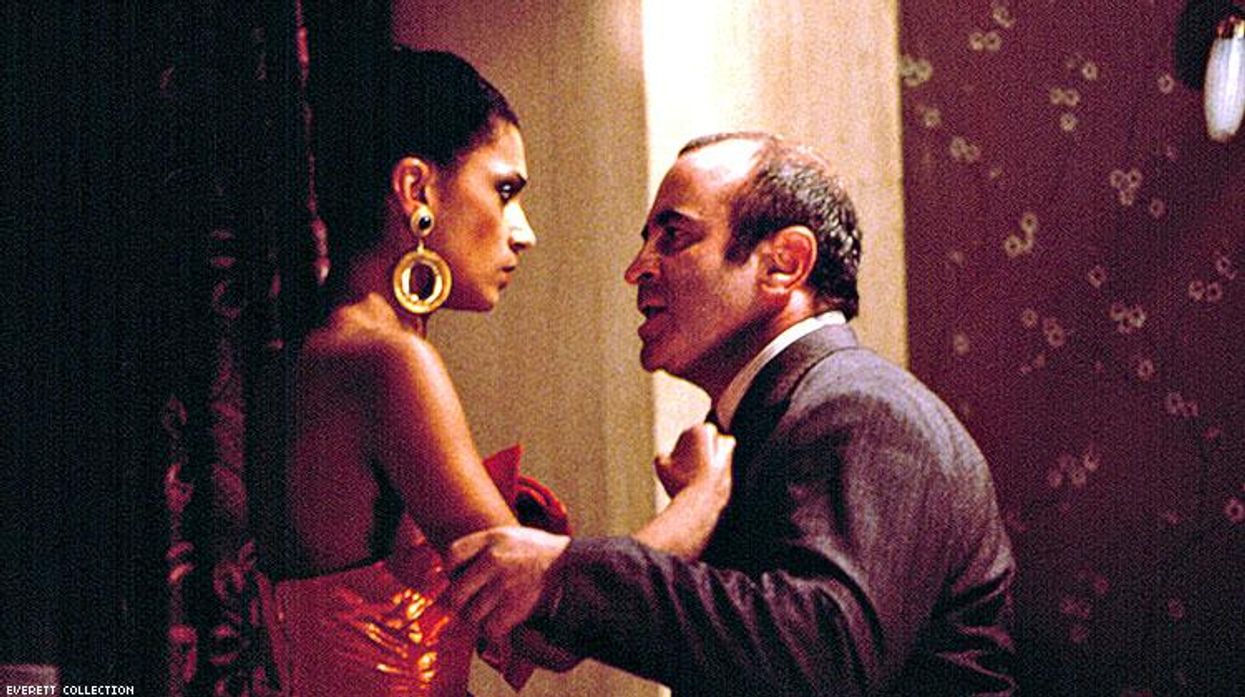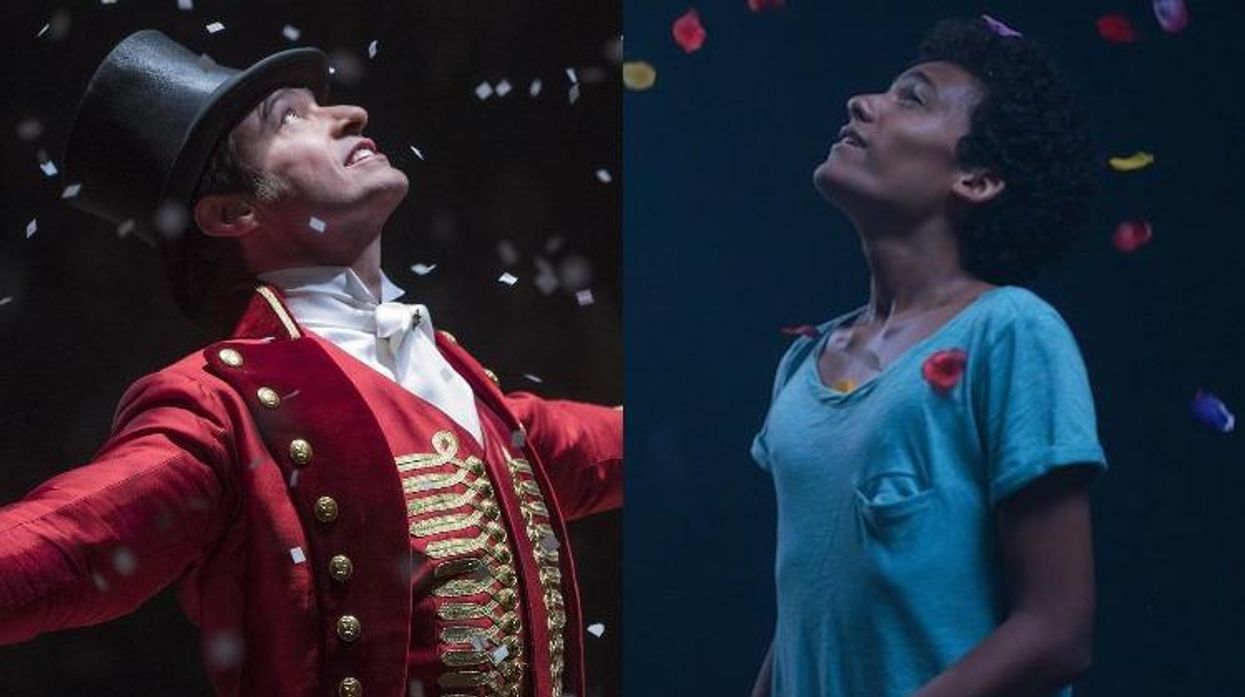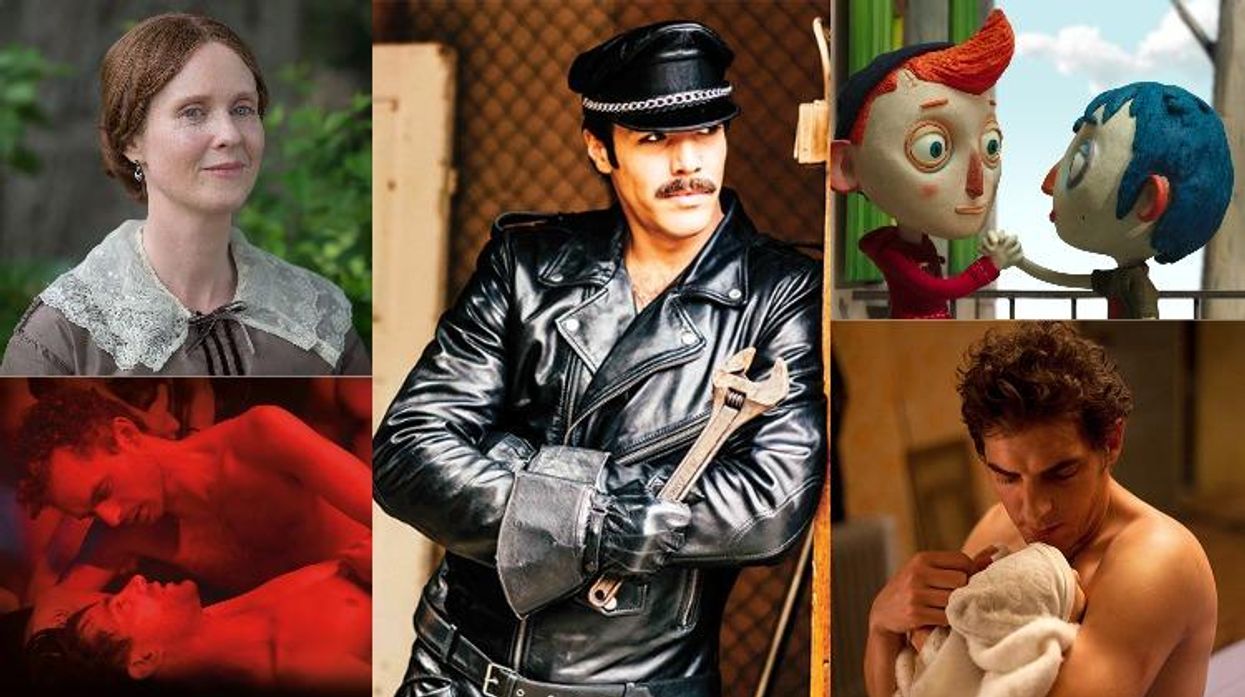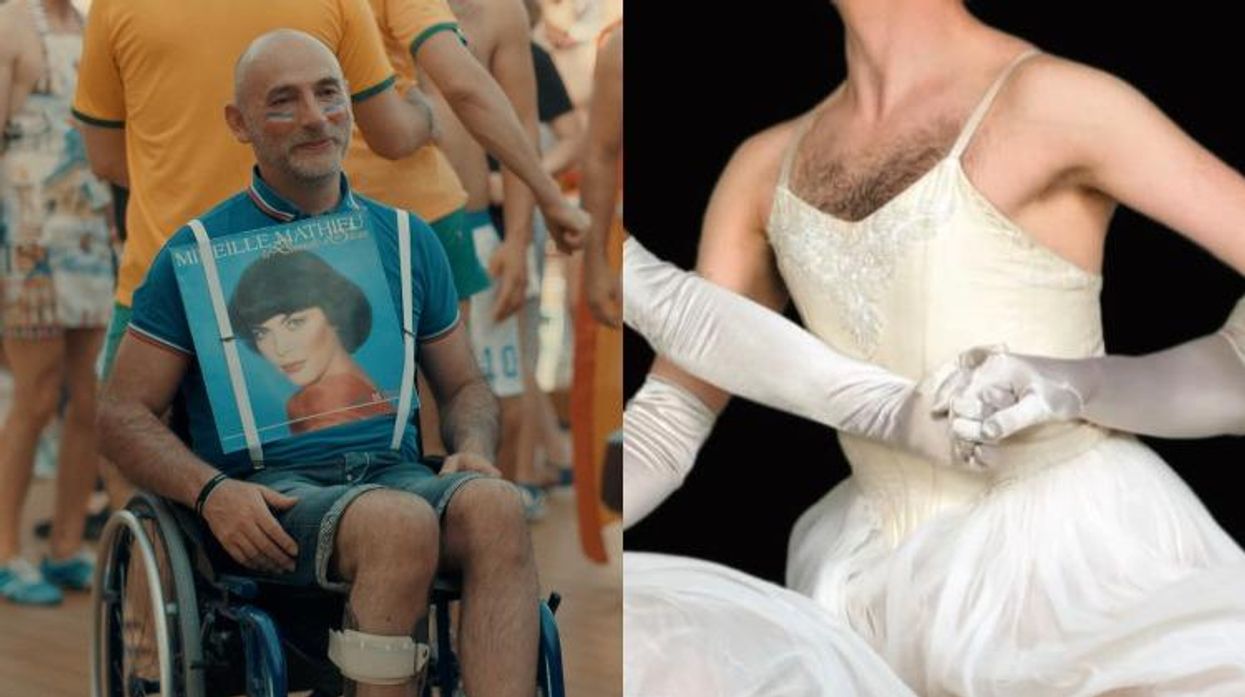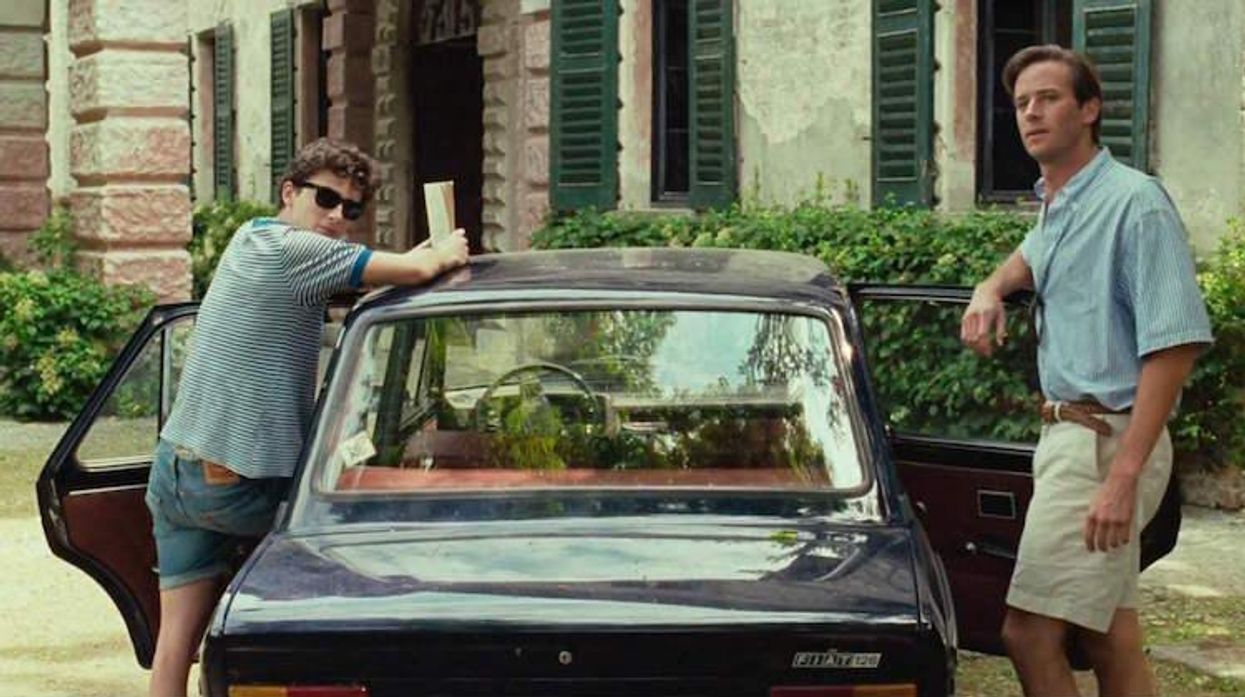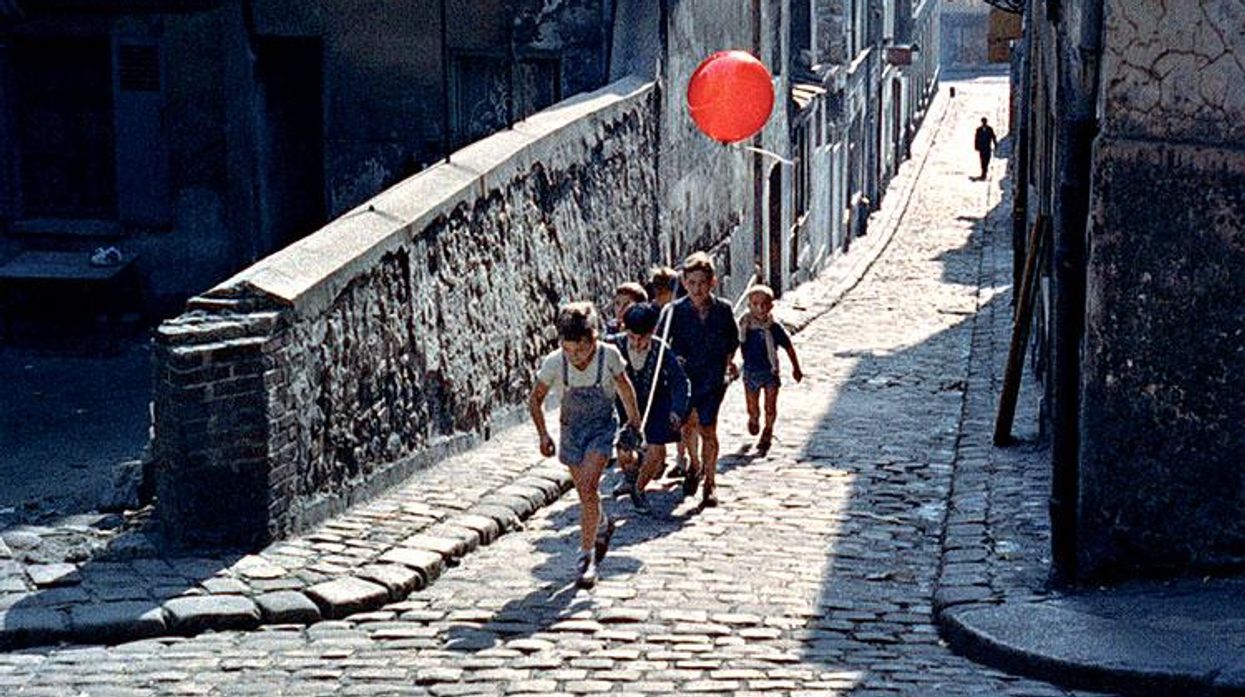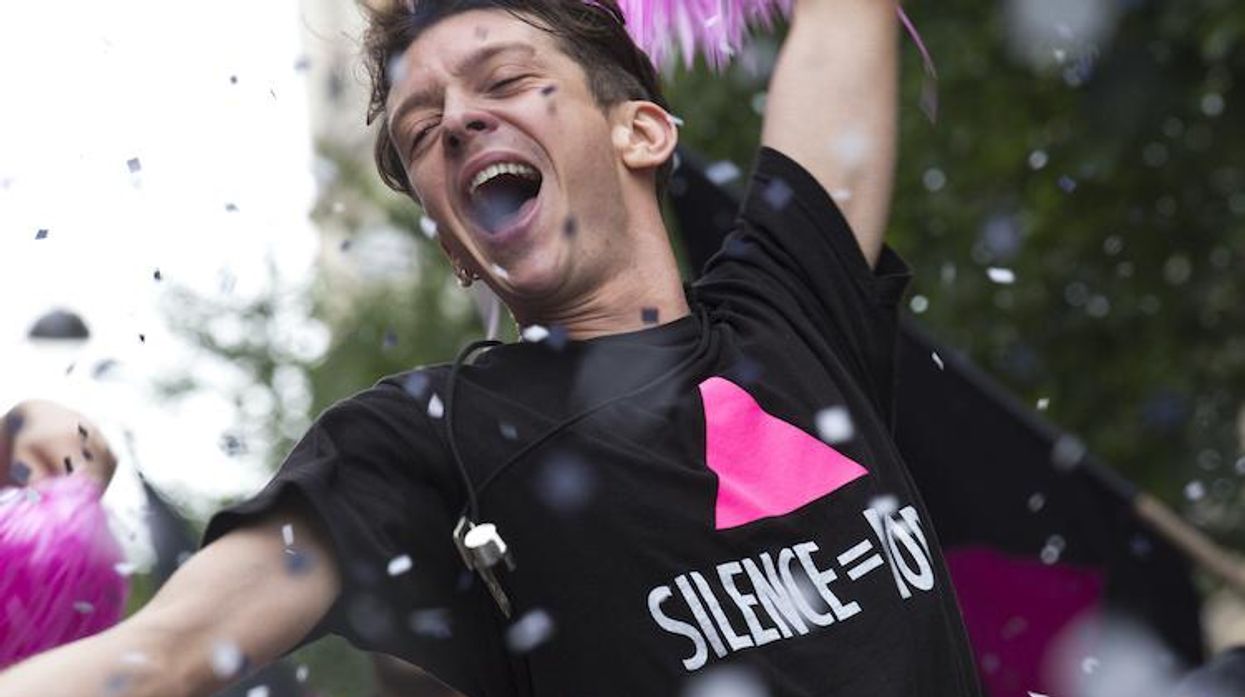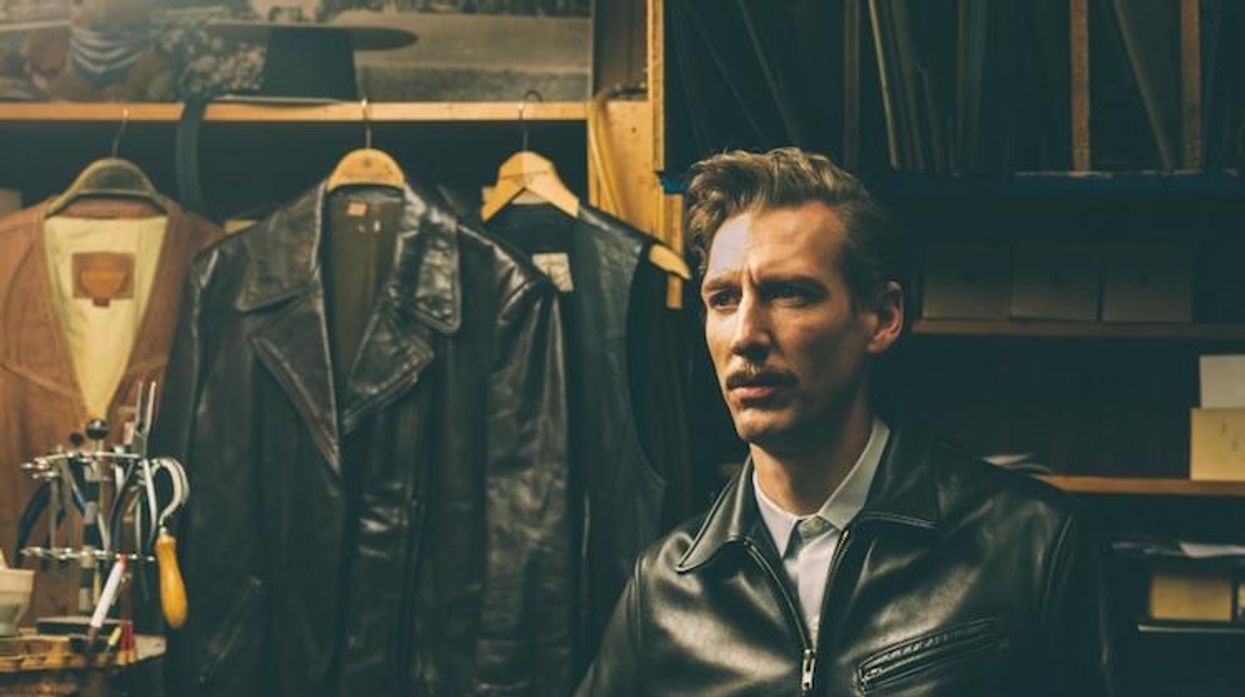Eyes meet. Glands swell. Hopes rise. The museum sequence of Brian De Palma's 1980 Dressed to Kill is the moment the film first rises to greatness. It is also a superb dramatization of urban sexuality -- especially, by-proxy gay sexuality.
De Palma depicts an urban habit -- cruising -- that once defined gay life in New York City of sexual alertness and readiness. These prerogatives were liberated by the 1960s-'70s sexual revolution. The scene's combination of lust, apprehension and opportunity idealized cruising as a particular social ritual of desire. It's a promiscuous male habit as much as a tendency of sexual rebellion. But decades before social media sites -- like Grindr, Bender, Mister, Tinder, and Squirt -- depersonalized sexual connecting, cruising was the way people met; where mutual attraction was immediately -- instinctively -- acknowledged.
The spark of cruising was rarely portrayed on screen (Hollywood regularly emphasized the socially-sanctioned "meet-cute") which is part of why Dressed to Kill was a huge hit -- not just among fans of suspense thrillers, but for those who dared admit the thriller of romance. (What novelist Erica Jong called "the zipless fuck" in her bestseller Fear of Flying). Gay viewers recognized, in that museum sequence, a familiar, uniquely personal experience -- a special thrall.
It's all about eye contact. In 1966 De Palma had filmed an Op Art exhibit and titled it The Responsive Eye. Dressed to Kill literalizes that idea through the devious way an eager, openly anxious woman and a mysterious man in sunglasses catch each other's attention, suss-out their hunger, and click. The gayish insight is brilliant.
Dressed to Kill's 35th anniversary (a new Blu-ray remastered edition has been released by Criterion) updates De Palma's reputation as modernist who revises Hollywood genre for social satire. His (unfair) notoriety as an exponent of the male gaze who objectified and violently exploited women overlooks his sophisticated link with gay sexual license. At the core of Dressed to Kill, the seductive thrill and thrilling danger of sexual immediacy overwhelm gender stereotype and facile moralizing,
Due to De Palma's comic treatment of the subject -- including his reference to such movie mythology as Alfred Hitchcock's Vertigo and satirical rebuff of stuffy social standards, Dressed to Kill courts controversy and surpasses it.
Sex in Dressed to Kill exceeds moralistic expectations and gender categories, too. De Palma's original screenplay advances from a story about a frustrated Manhattan housewife and mother, Kate Miller (Angie Dickinson), to the sexual confusion experienced by a call-girl, Liz Blake (Nancy Allen), who witnesses a murder and a psychiatrist, Robert Elliott (Michael Caine), whose patient admits to the killing.
What was titillating in 1980 -- cruising and transsexual identity -- play differently in 2015, yet Dressed to Kill retains undeniable fascination -- especially for LGBT culture. It doesn't shake-off Puritan culture's sexual fear but its boldness earns appreciation as a classic of the pre-AIDS era.
William Friedkin's Cruising, another 1980 film, portrayed gay society through a sleazy serial-killer mystery set in New York's Bondage-Discipline underworld. (Al Pacino played a heterosexual cop tantalized by forbidden behavior, neurotically seeing gayness only as a sex-and-death equation). But in Dressed to Kill, De Palma dramatized cruising as part of social life -- the sexual license that even middle-class heterosexuals enjoyed. De Palma's sophomoric lustiness derived from his earliest film burlesques (The Wedding Party, Greetings, Hi, Mom!, Sisters, Phantom of the Paradise) where counterculture ideas confounded the mainstream.
For his first, truly adult film about sex, De Palma's perspective matures in Dressed to Kill. Kate's manhunt, set in the Metropolitan Museum of Art, equaled the jailhouse symbolism of Jean Genet-Jean Cocteau's Un Chant d'Amour (1950). It also explored the same existential territory seen in a breed of underground New York porn films like Sam Scott's Non-Stop (where seemingly spontaneous, peripatetic episodes ranged from rendezvous at Manhattan's West Side piers to street assignations in Greenwich Village). De Palma outclasses porn, but his artistic connection to Surrealist filmmakers from Hitchcock to Cocteau to Bunuel proves he was unafraid to depict subconscious, even outre, desires.
Kate's bored gallery browsing is depicted when she stares back at an Alex Katz portrait that mirrors her own impatience. Her sexual frustration is caricatured when she observes a painting of a gorilla whose oversized, hairy, supine nakedness mocks her own, suppressed, animal instincts. She abstractly writes in her memo pad, "Pick up turkey." (Come now, Brian!)
It's all prelude to her noticing the handsome man wearing sunglasses who invades her space and stirs her curiosity. Their cat-and-mouse politesse (a game of high-class silent flirtation) deepens Kate's interest which De Palma sensualizes by having the camera follow them in slowly flowing perambulations through museum exhibit space. This silent sequence (except for Pino Donaggio's tense, teasing music score) is a long, masterful pantomime, delicately acted by Dickinson. The desperation and feints of cruising are clearly presented in details so timeless that the sexual hunt is immortalized (including Kate feeling wanton and exposed as she stands before one of Eric Fischl's satirical nudes).
Jean Genet, John Rechy, Larry Kramer, and Andrew Holleran captured moments like this, but they mainly used words; De Palma used visual, sensual thrill. Not even Scott's brazen, satiating Non-Stop porn beats the cultural candor of this sequence. De Palma's spatial sense equates Kate and her mysterious male to the existential panoramas of Antonioni films -- good enough to raise the archetype of gay urban cruising to an art form. The recognition of that common, though illicit, ritual confirms a great mainstream movie.
De Palma's parallel of heterosexual adventure to gay experience is not unlike the way a number of male filmmakers used Hollywood's woman's melodrama to sublimate gay male feelings. No American movie of the pre-AIDS era came so close to gay urban knowledge and feeling as Kate's open-air arousal -- or her orgasmic scream in a cab mixing with the sound of city traffic, or her slightly lost sense of her surroundings post-sex. Kate's rude surprise -- discovering her pick-up's STD notice from the city health department -- jolts the thriller's sexual fantasy to a new level of adult reality.
In hindsight, this looks like a presentiment of AIDS. Fact is, it's a key to Dressed to Kill's universal truth. De Palma's daring to commiserate with the sexual candor of raffish gay male habit is completed by his honest empathizing with its illicit downside. Health clinic notices (a reverberant rite-of-passage during urban gay life in the good ol' days before AIDS) gave Dressed to Kill a jolt of reality but also a depth of feeling. (New York Chelsea habitues know that thrill-and-fear today.)
Kate pays for her transgression with a moment of conscience similar to the venereal scare that crosses class barriers in Max Ophuls's 1950 film La Ronde -- a metaphor for the itch of social mixing, a moral reckoning for reckless desiring. This means Dressed to Kill is also serious enough to bear the specter of AIDS in any future assessment of 1980s film.
The tragedy that follows Kate when she rushes through her own walk of shame shows De Palma at a peak sympathetic moment. His compassion is blended with horror but it's there irrefutably -- in Kate's palpable vulnerability, her visible remorse, her reaching out for help, and especially in the knife's glint that captures the hooker Liz's attention. Their eyes meet and Liz's instantaneous sisterhood interrupts the horror and turns to quick, deep and haunting heroism.
I could say more, but you get the general idea that De Palma's sexual audacity in Dressed to Kill was precocious. From the fine art of cruising to the transsexual subplot (a character named Bobbi pleads "I'm a girl inside this man's body and you won't help me get out!"), De Palma's artistry considers humanity's complex sexual variety. One of his famous split-screen sequences shows Liz and Elliott both watching a TV broadcast of an actual transsexual insisting "Oh, I've always been devoutly heterosexual!" De Palma's horror film premise creates a timeless path to empathy -- for women, for transsexuals, for the practice of sexual independence and the fine art of cruising -- that gay men have always had to risk.
The new 4K restoration of Dressed to Kill is available on Criterion and Criterion Blu-ray.


